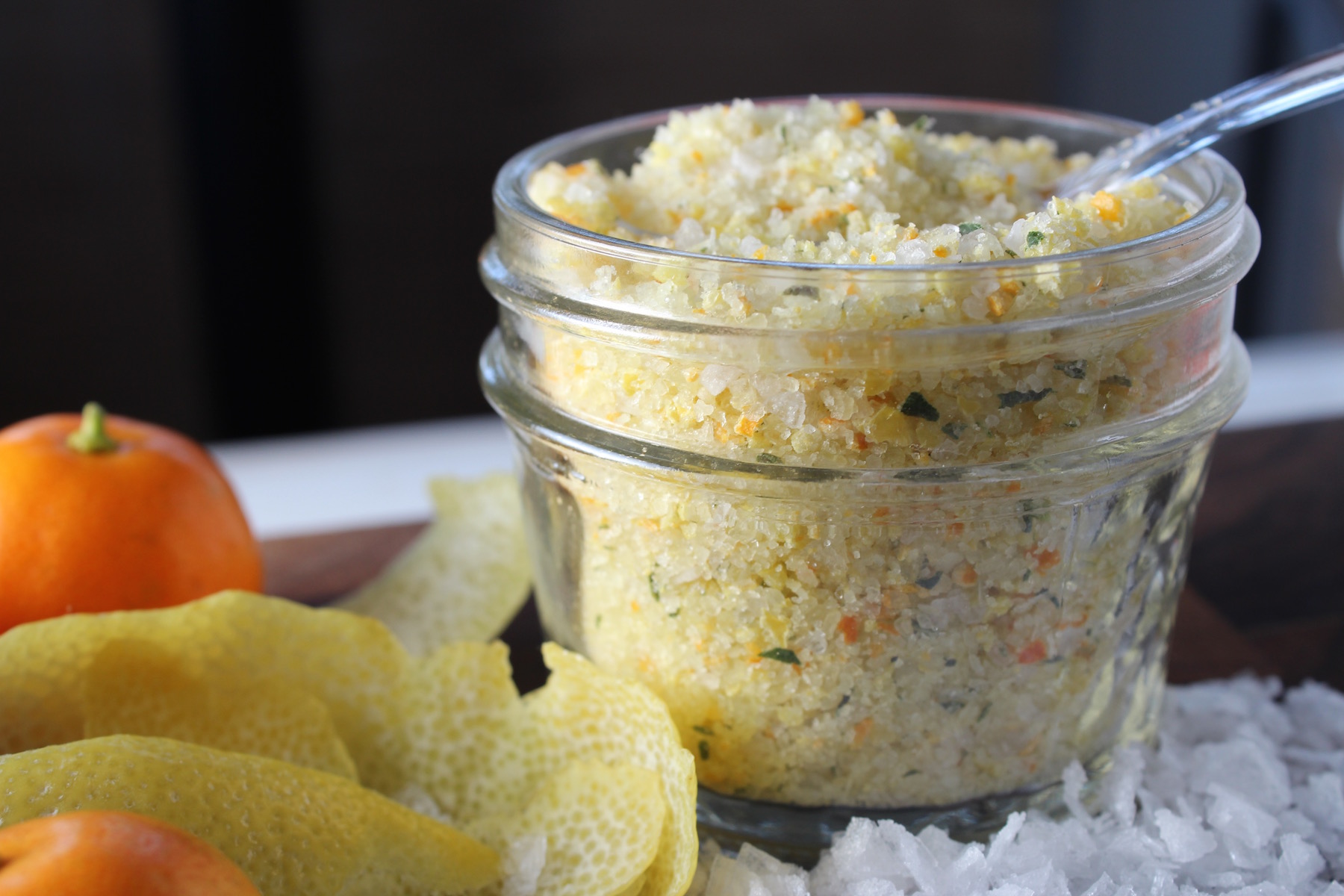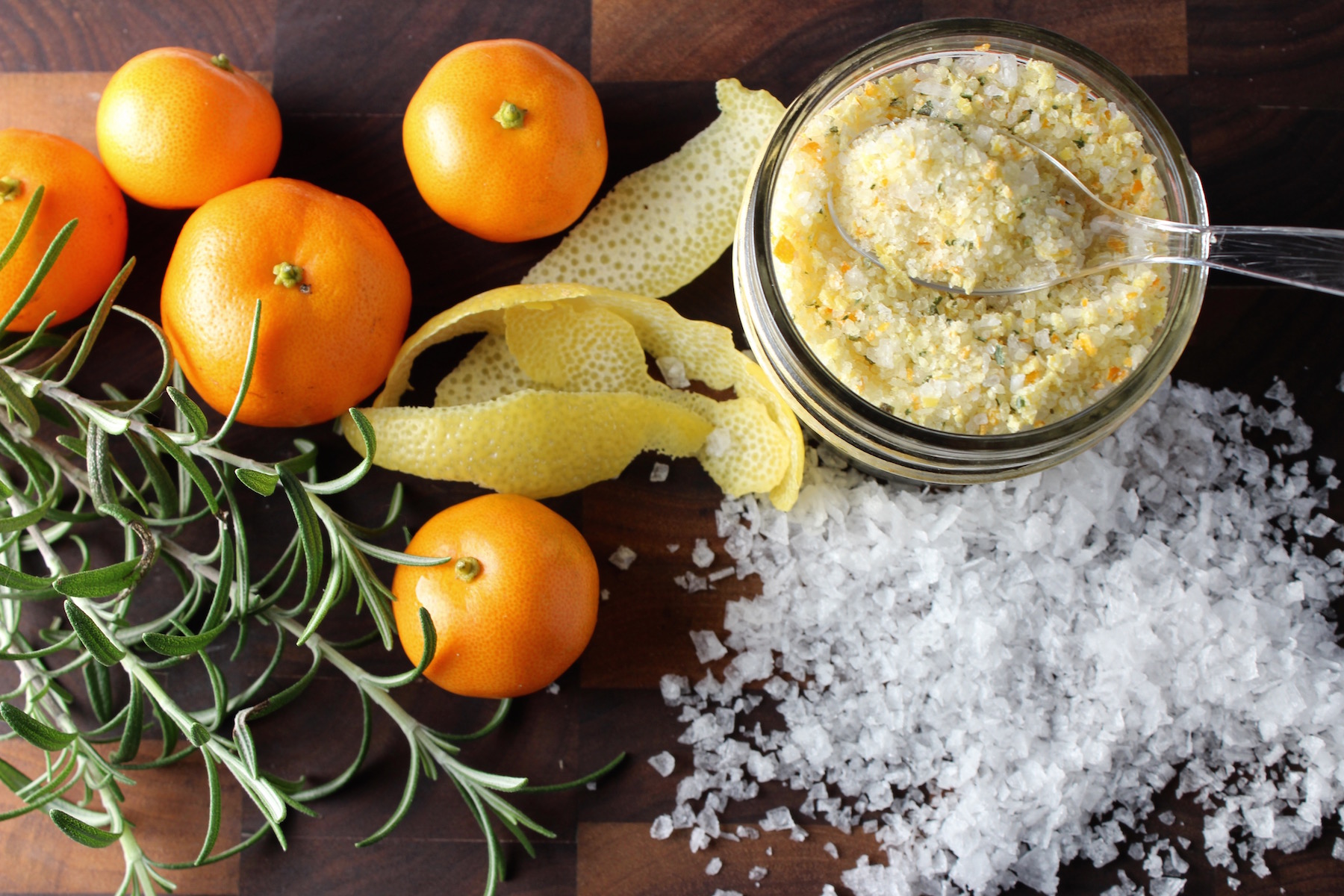
According to Jay Rayner, British food critic, “Salt is the difference between eating in Technicolor and eating in black and white.” How true! Unless you’re on a low-sodium diet, salt is a basic flavor enhancer in your kitchen. It’s a key ingredient in cooking and baking because it rounds out the flavors of food. And a flavored salt, in particular, can bring any dish from good to great in just a pinch.
For those of us who cook a lot, making our own flavored salts is an economical (i.e., less than a couple of dollars) way of having delicious flavors at our fingertips, without having to pay the high prices at specialty stores.
I typically start with sea salt, fleur de sel or Maldon — and sometimes I mix all three if I have them on hand. Each offers its own texture and flavor differences, depending on moisture content. Even kosher salt works well in a flavored salt. You can use herbs, citrus, mushrooms, fruits, vegetables, chile peppers and any number of items — either straight from the garden or dried beforehand, depending on what you’re using. The only thing that limits you is your imagination 🙂 I especially like to blend citrus with fresh herbs, since I cook a lot of fish, so I always have a batch handy. And I typically make small batches, so I know it’s always fresh.
If you start with already dried ingredients, you can simply mix them into the salt and let it sit for a while to permeate the flavors. But when it comes to using citrus, I like to blend the salt directly with the citrus peels and herbs (in a food processor) and dry everything in the oven at a low temperature — this offers a really intense flavored salt since all the oils from the citrus and herbs are blended directly into the salt.

For this batch, I used some of my beautiful calamondin* peels, along with fresh lemon peels and rosemary. It’s a colorful, fragrant and flavorful combination that’s particularly delicious on seafood, but also great on grilled poultry or vegetables. I’ve even used this flavored salt as a marinade for a raw turkey breast that sat in the fridge for 24 hours. Once I roasted it, I found that the salt had tenderized the meat, drew out its excess moisture, and brought in a lot of flavor dimension, so it was really yummy.
(*Note – if you don’t have access to calamondins, simply use orange peels, without the white pith).
Some tips when making flavored salt:
1) A general proportion rule to follow is 1/4 c. salt to 1 tsp. flavorings.
2) Try experimenting with flavorings and salt types to find out what you like best.
3) They can be very concentrated in flavor, so when topping a finished dish, start with a small amount and add more to taste (you don’t want to overpower your dish).
4) Flavored salts can even be mixed into a dish while cooking, just be aware of how much salt you’re adding, so you don’t over-do it.
5) When packaged in pretty, airtight containers, they make great hostess or holiday gifts for folks who love to cook.
- ½ c. sea salt
- ½ c. Maldon salt (reserve ¼ c.)
- 2 Tb. fresh rosemary leaves
- Zest or peel of 1 small lemon
- 1 Tb. calamondin (or orange) peels
- Heat oven to 150 degrees.
- Line a baking sheet with parchment paper.
- Place sea salt and ¼ c. of the Maldon salt into a food processor.
- Add the rosemary leaves, lemon zest and calamondin (or orange) peels.
- Pulse several times to combine the ingredients. When it looks like everything is incorporated and minced, transfer to a small bowl.
- Add the remaining ¼ c. Maldon and stir throughout the mixture.
- Pour the mixture into the prepared baking sheet.
- Place in oven to dry out the salt mixture for about 20 minutes.
- Remove from oven and cool thoroughly before transferring to an airtight container.
2) If you don't have access to Maldon, sea salt or fleur de sel, kosher salt makes a fine substitute.




Gosh, I didn’t know my post would be so life-changing for you, Joe 🙂 Hope you give it a try!
Your so right about the salt analogy “Technicolor vs black and white”. I had no idea you could do this with salt, but why not. I thought my options were limited to iodized salt, sea salt, and lemon salt. It’s a whole new world!